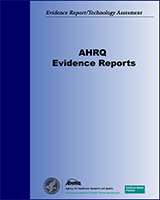NCBI Bookshelf. A service of the National Library of Medicine, National Institutes of Health.
Ip S, Glicken S, Kulig J, et al. Management of Neonatal Hyperbilirubinemia. Rockville (MD): Agency for Healthcare Research and Quality (US); 2003 Jan. (Evidence Reports/Technology Assessments, No. 65.)
This publication is provided for historical reference only and the information may be out of date.
As mentioned in the Conclusions chapter, kernicterus has many different definitions. Reaching a national consensus in defining this entity, as in the model suggested by Johnson, Bhutani and Brown (2002), will also help in formulating a valid comparison of different databases.
Kernicterus, in general, is associated with high bilirubin level (greater than 20 mg/dl). Without good prevalence and incidence data on hyperbilirubinemia and kernicterus, one would not be able to estimate the risk of kernicterus at a given bilirubin level. Making extreme hyperbilirubinemia and kernicterus a reportable condition would be a first step in that direction.
As kernicterus is infrequent, doing a case control study with kernicterus may help to delineate the role of bilirubin in the development of kernicterus. The necessity of multicenter cooperation is evident. One may have to rely on animal experiments to seek proof that bilirubin is the etiologic agent in kernicterus. It is important to seek other factors that may act in concert with bilirubin to cause kernicterus. Fundamental research on the blood brain barrier will likely yield useful additional data.
It is also clear that an absolute bilirubin level is insufficient by itself to predict long-term neurodevelopmental outcome. The data summarized in this report suggests that using conventional measures of bilirubin to study the effect on neurodevelopment will continue to yield conflicting results. Duration of hyperbilirubinemia and measures of bilirubin binding may provide a better approximation of the effect of bilirubin exposure on the central nervous system. Using hour-specific bilirubin, documenting length of exposure and employing laboratory-proven methods to measure bilirubin-albumin binding may therefore yield a more useful profile of bilirubin. These factors merit further investigation.
One area for further research would be the validation of an age-specific (by hour) nomogram for TSB in healthy full term infants, with evaluation of potential differences by gender, race and ethnicity, as well as prenatal, natal and postnatal factors. Once established, use of the 95th percentile to define clinically significant jaundice would provide uniformity across studies. This would be analogous to the use of age-specific systolic and diastolic blood pressure to define hypertension and age-specific body mass index to define overweight and obesity in children. Validation of a standardized TSB nomogram as discussed above would either incorporate these potential differences or result in the development of population-specific nomograms if differences were significant. This would be analogous to the use of population-specific growth charts for weight and height percentiles in children.
New technological advances in the transcutaneous measurement of bilirubin, such as the Bilicheck™ and Colormate III (that have the ability to correct for skin color effects and hemoglobin) have been introduced and appear promising. Future research should validate these initial findings in diverse clinical populations and address issues that might affect performance such as race, gestational age, age at measurement, phototherapy, sunlight exposure, feeding, and accuracy as screening instruments and for ongoing monitoring of jaundice. Additionally, studies should address cost effectiveness and reproducibility in actual clinical practice. Given the inter-laboratory variability of measurements of TSB (Gourley, 1999; Schreiner and Glick, 1982; Vreman, Verter, Oh, et al., 1996), future studies using HPLC should be used as the reference standard along with the routine laboratory methods of TSB in use when evaluating noninvasive measures of bilirubin.
- Overview of Trends in Use and Quality of CRC Screening - Enhancing the Use and Q...Overview of Trends in Use and Quality of CRC Screening - Enhancing the Use and Quality of Colorectal Cancer Screening
- Future Research - Management of Neonatal HyperbilirubinemiaFuture Research - Management of Neonatal Hyperbilirubinemia
- Appendix D Peer Reviewer Questionnaire - Systematic Review of the Literature Reg...Appendix D Peer Reviewer Questionnaire - Systematic Review of the Literature Regarding the Diagnosis of Sleep Apnea
- Appendix I AHCPR Data Matrix of Prevalence or Outcomes of Sleep Apnea Studies - ...Appendix I AHCPR Data Matrix of Prevalence or Outcomes of Sleep Apnea Studies - Systematic Review of the Literature Regarding the Diagnosis of Sleep Apnea
- 5330409N07Rik RIKEN cDNA 5330409N07 gene [Mus musculus]5330409N07Rik RIKEN cDNA 5330409N07 gene [Mus musculus]Gene ID:319766Gene
Your browsing activity is empty.
Activity recording is turned off.
See more...
